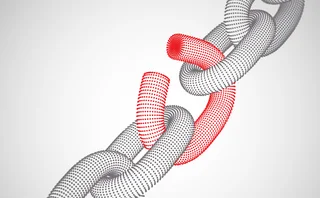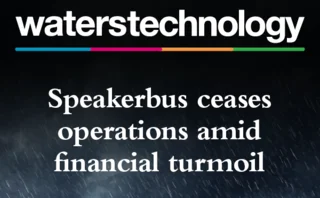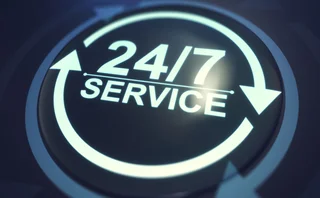Jake Thomases: The Greed for Speed

Speed, for lack of a better word, is good. Speed is right. Speed works. Speed clarifies and captures the essence of the trading spirit. Speed in all low-latency strategies, speed in latency arbitrage and in rebate trading has marked the upward surge of humankind. And speed, you mark my words, will not only save the financial markets, but that other malfunctioning market called the USA.”
So said Gordon Gekko in Oliver Stone’s iconic 1987 film Wall Street. Well, sort of. He might have actually said something about greed being good. But perhaps a 2012 remake would include the above quote—as opposed to the most notable line from the 2010 sequel: “Jeez, Oliver, you call this a script?”
To be sure, speed drives technology, which drives trading, which drive the markets. We refer to it as the race to zero, and technologists are all too familiar with the demands from the front office: “Why aren’t we under 10 milliseconds? Why aren’t we under three milliseconds? Why are you still talking about milliseconds?” The bottom line is that latency must be conquered … sometimes at a high cost.
Race to Zero
It is easy to get caught up in the race to zero. I often hear about an entity reducing its latency and I take it as an automatic positive. At a recent conference, though, I was reminded of an important point: Relative latency, not latency itself, is what matters. Jackie Joyner-Kersee did not win gold medals because she set records—she won them because she beat the other athletes. High-frequency trading firms get no special prizes for clocking in at 900 microseconds or one microsecond. Their reward is in beating out their competitors, which only requires them to be a fraction faster. If they are, they will capture the price move in the market. A fraction slower, and they’ll miss it.
Ultra-low-latency trading is a game of diminishing returns. Each new upgrade, each attempt to shave off a little more time, is progressively more expensive. Such investment is not always worthwhile. Say your latency is at five milliseconds and the competition in your particular trading strategy all sit around one millisecond. A vendor is offering a pre-trade risk check system that will reduce your latency by three milliseconds. Deploying it will bring you down to two milliseconds. Yes, you’re faster, but you’re still not as fast as your competitors. The return on that investment is basically nil.
Anticipation
Firms ought to also anticipate the moves of their competitors. If you make a massive investment and bring your latency in line with the market, but a competitor makes a small upgrade two weeks later and jumps back in front, the advantage is gone.
Roji Oommen, director of business development at Savvis, says only 15 to 20 firms are building innovative ultra-low-latency solutions, often centered around field-programmable gate arrays (FPGAs) and other custom hardware.
“If you’re not prepared to play in that game, you have to look at yourself hard in the mirror and say, ‘I’m not going to kid myself,’” says Brennan Carley, global head of the Elektron platform at Thomson Reuters. “If you’re driving a Toyota and the other person is driving a Ferrari, there’s not a lot you’re going to be able to do to win that race. So you need to be able to say, ‘I’m going to play in a different game. My trading strategies are not going to win by being the fastest.’”
Speed is good, it’s true. And a few firms can afford to keep spending in that race to zero. But the rest need to be careful not to charge too hard toward a finish line that doesn’t exist. It’s about being faster than the next competitor, whether it’s by a mile or a foot. If the mile costs a mint, be happy with the foot. And if the other guy is a mile ahead, it might be wiser to drop out of the latency race all together and take up skiing.
Only users who have a paid subscription or are part of a corporate subscription are able to print or copy content.
To access these options, along with all other subscription benefits, please contact info@waterstechnology.com or view our subscription options here: https://subscriptions.waterstechnology.com/subscribe
You are currently unable to print this content. Please contact info@waterstechnology.com to find out more.
You are currently unable to copy this content. Please contact info@waterstechnology.com to find out more.
Copyright Infopro Digital Limited. All rights reserved.
As outlined in our terms and conditions, https://www.infopro-digital.com/terms-and-conditions/subscriptions/ (point 2.4), printing is limited to a single copy.
If you would like to purchase additional rights please email info@waterstechnology.com
Copyright Infopro Digital Limited. All rights reserved.
You may share this content using our article tools. As outlined in our terms and conditions, https://www.infopro-digital.com/terms-and-conditions/subscriptions/ (clause 2.4), an Authorised User may only make one copy of the materials for their own personal use. You must also comply with the restrictions in clause 2.5.
If you would like to purchase additional rights please email info@waterstechnology.com
More on Trading Tech
Examining how adaptive intelligence can create resilient trading ecosystems
Researchers from IBM and Wipro explore how multi-agent LLMs and multi-modal trading agents can be used to build trading ecosystems that perform better under stress.
S&P Global partners with IBM, Eventus launches Frank AI, Tradeweb expands algo execution abilities, and more
The Waters Cooler: Arcesium makes waves with Aquata Marketplace, NYSE Cloud flows into Blue Ocean Technologies, and more in this week’s news roundup.
Robinhood looks to ‘Chaos Monkey’ for op resilience playbook
As firms look to break down silos across business divisions to bolster operational resilience, the US broker is ditching emails, while utilizing chaos engineering and automating everything in sight.
Bank of America’s GenAI plan wants to avoid ‘sins of the past’
Waters Wrap: Anthony spoke with BofA’s head of platform and head of technology to discuss how the bank is exploring new forms of AI while reducing tech debt and growing interoperability.
TMX Group buys Verity, Deutsche Börse puts market data on-chain, and more
The Waters Cooler: The Texas Stock Exchange is SEC-approved, FalconX launches 24/7 access to OTC crypto options, and the CFTC needs a chair.
WatersTechnology latest edition
Check out our latest edition, plus more than 13 years of our best content.
24/7 trading roll-out risks pushback, industry veterans say
DRW’s Wilson warns of “mutiny” on non-stop rate options trading.
Ediphy challenges FCA, Sterling launches new OMS, and more
The UK bond tape is halted, LSEG and Databricks partner, Wells Fargo adopts TransFICC’s One API, and more in this week’s news roundup.







